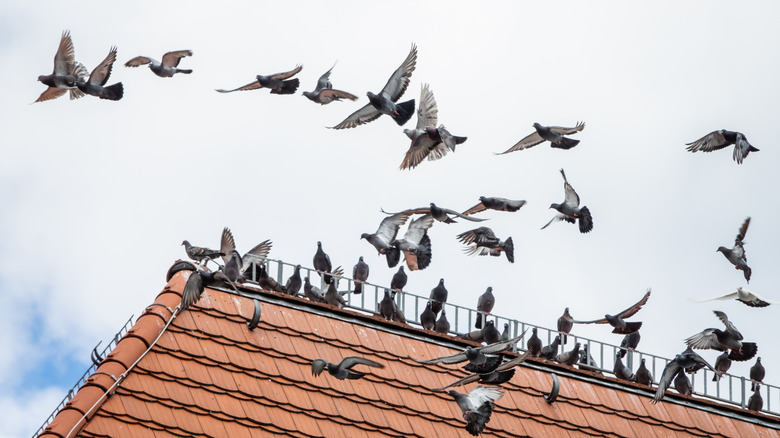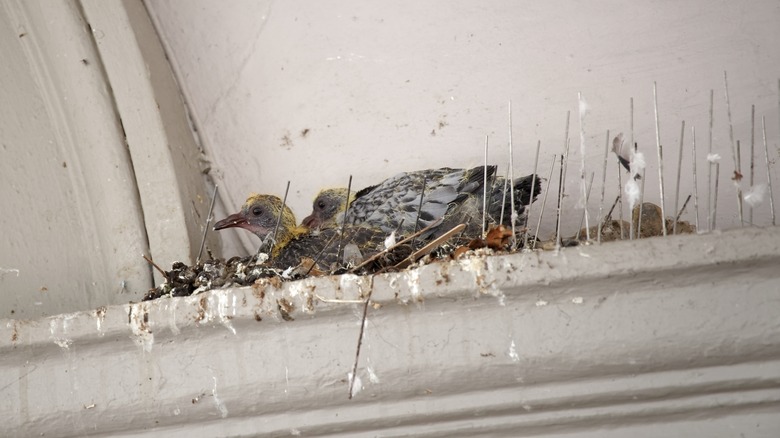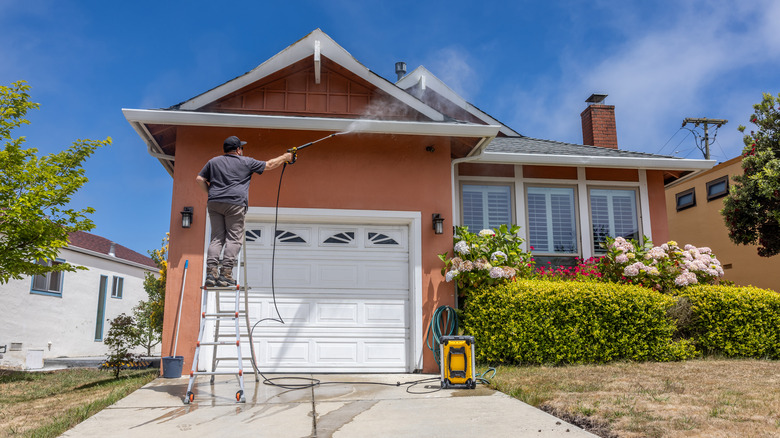Why Do People Use Bird Repellent Gels And Sprays & Do They Actually Work?
Birds are symbols of freedom. Secretly, most of us probably wish we could take off and fly with them. Yet, there are times when we just don't want birds around. Messy nests, holes in exterior walls, and threats of a "gift" from above are the downsides of living near our feathered friends. So how do you get rid of birds that you do not want to see in your yard without harming them or other living things nearby?
There are scores of products on the market that are meant to prevent bothersome birds from getting too comfortable around your home, and bird repellent gels and sprays are gaining popularity. However, are they safe and effective? The Environmental Protection Agency states that the active ingredients of bird repellent gels and sprays are not toxic to birds or ecosystems. However, there are still many lingering questions and concerns about whether they are worth a try.
What do bird repellent gels and sprays do?
Gels and sprays are marketed as a simpler way to control bird populations than options like bird spikes that dissuade animals from perching or nesting in an area. Bird repellents in any form are meant to change pest birds' behavior, usually through sensory cues. Traditional remedies focused on frightening birds away with a visual or through sound, such as this tip involving an unexpected help of reflective pie pans to ward them off. Instead, gels and sprays target birds' other senses.
Several brands market transparent gels that create a sticky surface that's unpleasant to birds. The active ingredient, polybutylene, is a non-drying polymer that the EPA deems safe for use. In theory, when birds land on the substance, the stickiness will make them recoil and not return. Optical gels are small disks of a sticky material that looks like flames to birds, and the sight of fire is meant to send them flitting off. For extra measure, they are scented with citronella and peppermint oils that are said to be repulsive to birds. Peppermint oil has been shown to repel birds from unwanted areas.
Sprays rely on unappealing scents to repel birds. Many sprays contain methyl anthranilate, a compound that comes from concord grapes. Approved as safe by the EPA, methyl anthranilate is said to keep birds away with its disagreeable smell and irritant qualities that supposedly only affect birds.
Do gels and spray bird repellents work?
Whether gels or spray repellents work is still up in the air and may differ on a case-to-case basis. Consumer reviews are very mixed, and research is somewhat scarce. With limited data available, it's hard to know whether these remedies are worth the cost. One study concluded that optical gels were very effective for small-scale pigeon mitigation, but that the cost and time needed to make it effective in public spaces would make it impractical. Some scientific studies on sprays with methyl anthranilate have shown it to be effective, while others haven't had the same results.
While neither optical gels or sprays contain ingredients that seem too concerning, it's best to steer clear of transparent gels, whether they are made from polybutylene or other compounds. The EPA warns that the polymer is sticky enough to trap small birds, and consumers report occasional unwanted bird deaths. There are complaints that small birds have been fatally trapped when their feathers come into contact with both oil-based and polybutylene gels.


